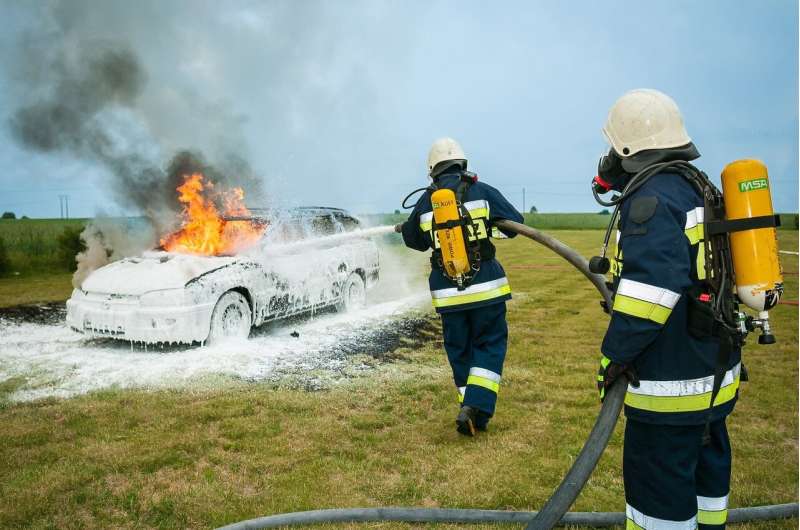Study detects the presence of flame retardants inside homes, offices and schools

Flame retardants are chemicals found in furniture, textiles, coatings, and plastics such as cell phones, laptops, televisions, etc., and are intended to prevent or delay the spread of a fire. The first ones came onto the market in the 1970s and since then the number of different ones has expanded. Flame retardants can be released into the environment through high temperatures, friction or cleaning and can thus accumulate in the air or dust inside buildings, leading to human exposure through inhalation, ingestion and skin contact.
Some flame retardants have been shown to have adverse effects on health and since 2004 have been banned by European legislation and replaced by new ones, called emerging flame retardants, the health effects of which have not yet been studied. The URV's TecnATox research group has now detected the presence of seven emerging flame retardants in the air in a pioneering study in Europe. The results of this research have been published in the scientific journal Science of The Total Environment.
The study, which is part of the FlameRISK project, has assessed the possible health risks, especially among children, whose tendency to put their hands or objects in their mouths, play on the floor and crawl on all fours increase their likelihood of exposure to these substances. To carry out the research, the research team analyzed samples from twenty interior spaces of homes, offices and schools in the province of Tarragona. Air was collected for 24 hours using sensors that emit a stream of air and retain flame retardants in a filter. Samples of dust accumulated on furniture surfaces and electronic devices in the same spaces were also available. They were subsequently analyzed to determine the levels of 41 different types of emerging or controlled flame retardants.
The results confirmed the presence of seven emerging flame retardants (TEP, TCIPP, T2IPPP, TPPO, DCP, TMCP and B4IPPPP) in the air for the first time in Europe, including at high levels. Controlled flame retardants were also detected in the samples, although in smaller amounts than the emerging ones. This is because in many interior spaces there are still products (furniture, paints, devices, etc.) that were manufactured with these flame retardants before they were banned in 2004.
The results were used to calculate the levels of exposure and the health risks for adults and children living in these indoor spaces. The risk was found to be higher for the child population, close to the limit considered dangerous by the legislation. "This shows the potential of these chemicals, particularly the flame retardant TClPP, to affect human health," says Roser Esplugas, a researcher in the URV's Department of Chemical Engineering who participated in the study. If the permitted limits are exceeded, these retardants can cause cancerous diseases and toxicological effects such as altered hormonal and neurological systems, among others.
"It should be stated that the study did not examine people's exposure to these compounds in other indoor spaces, such as vehicles, where the presence is greater than in homes. Consequently, we may assume that the real risk is even greater ", warns the researcher. Nor did the study look at their ingestion by humans, which is another major source of exposure. The widespread use of these compounds means that they can enter the food chain and, therefore, also be ingested through food.
The results of the study confirm the importance of continuing to measure flame retardants in different environments and assessing their effects on health in order to provide scientific literature on the possible risks to the population.
Research on the FlameRISK project continues and the research team is studying the possible neurotoxic effects of several emerging retardants that were detected in the air and dust samples used in the study.Common chemicals in electronics and baby products harm brain development
More information: Roser Esplugas et al, Emerging and legacy flame retardants in indoor air and dust samples of Tarragona Province (Catalonia, Spain), Science of The Total Environment (2021). DOI: 10.1016/j.scitotenv.2021.150494
Journal information: Science of the Total Environment
Provided by Universitat Rovira i Virgili
No comments:
Post a Comment